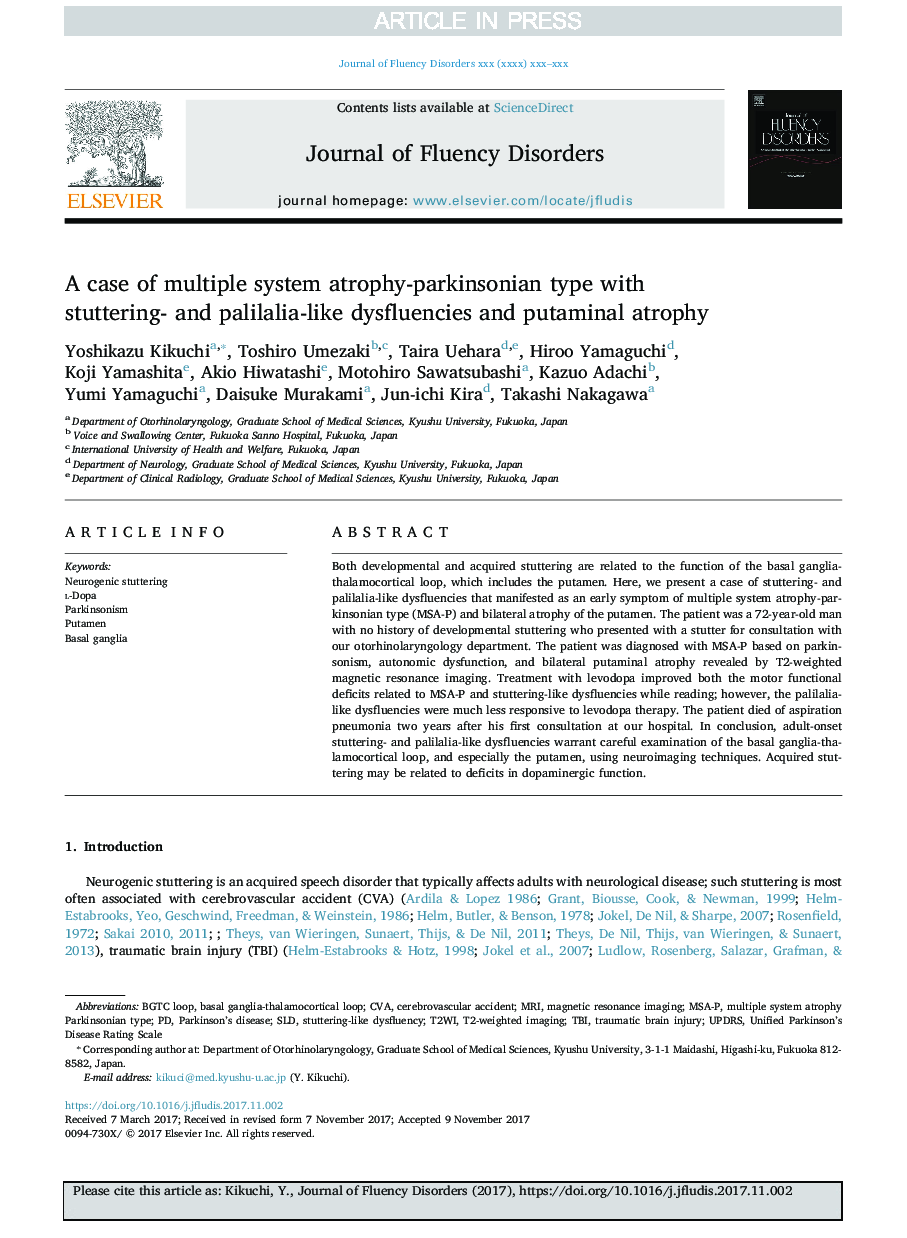| Article ID | Journal | Published Year | Pages | File Type |
|---|---|---|---|---|
| 7268484 | Journal of Fluency Disorders | 2018 | 8 Pages |
Abstract
Both developmental and acquired stuttering are related to the function of the basal ganglia-thalamocortical loop, which includes the putamen. Here, we present a case of stuttering- and palilalia-like dysfluencies that manifested as an early symptom of multiple system atrophy-parkinsonian type (MSA-P) and bilateral atrophy of the putamen. The patient was a 72-year-old man with no history of developmental stuttering who presented with a stutter for consultation with our otorhinolaryngology department. The patient was diagnosed with MSA-P based on parkinsonism, autonomic dysfunction, and bilateral putaminal atrophy revealed by T2-weighted magnetic resonance imaging. Treatment with levodopa improved both the motor functional deficits related to MSA-P and stuttering-like dysfluencies while reading; however, the palilalia-like dysfluencies were much less responsive to levodopa therapy. The patient died of aspiration pneumonia two years after his first consultation at our hospital. In conclusion, adult-onset stuttering- and palilalia-like dysfluencies warrant careful examination of the basal ganglia-thalamocortical loop, and especially the putamen, using neuroimaging techniques. Acquired stuttering may be related to deficits in dopaminergic function.
Keywords
Related Topics
Life Sciences
Neuroscience
Cognitive Neuroscience
Authors
Yoshikazu Kikuchi, Toshiro Umezaki, Taira Uehara, Hiroo Yamaguchi, Koji Yamashita, Akio Hiwatashi, Motohiro Sawatsubashi, Kazuo Adachi, Yumi Yamaguchi, Daisuke Murakami, Jun-ichi Kira, Takashi Nakagawa,
